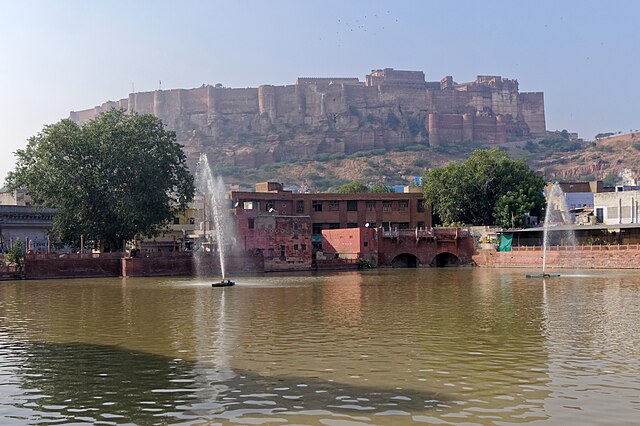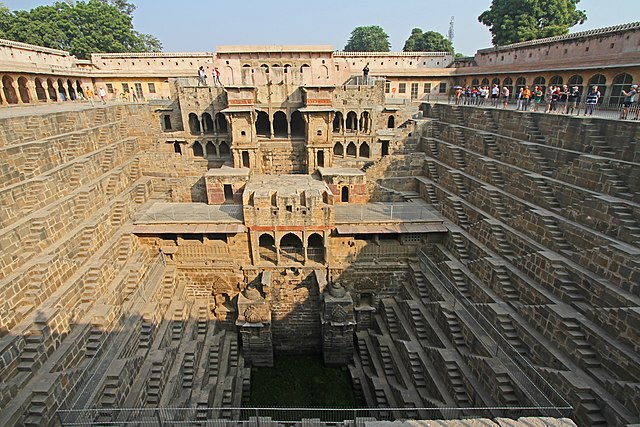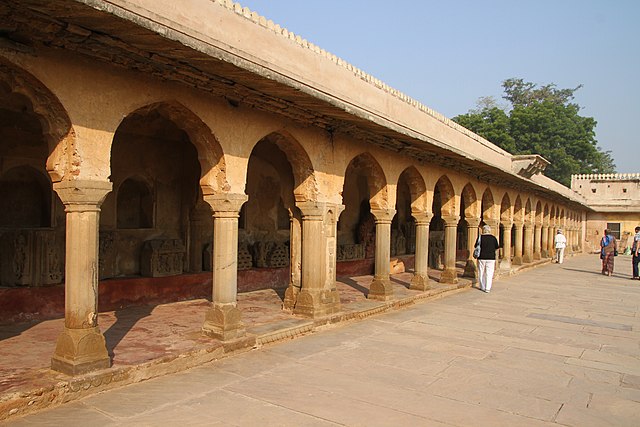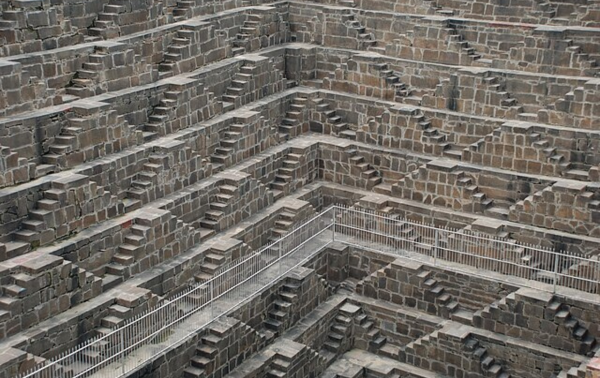Rajasthan, the land of majestic forts and vibrant culture, also boasts a lesser-known marvel – its ingenious water architecture. In a region where rain is a fickle friend, these structures were not just embellishments; they were lifelines carved from stone and resilience.
These architectural marvels, born out of necessity, have shaped the history and culture of the region. This offers a glimpse into a world where water was revered as life itself.
Rajasthan’s water structures trace their origins to ancient times when Rajput rulers and communities devised ingenious methods to harness and conserve water in the unforgiving desert landscape. Stepwells, known as baoris or bawdis, were excavated deep into the earth to tap into groundwater reserves, providing a reliable source of water for both daily needs and agricultural purposes. Imagine a time before monsoons were predicted by weather apps. Enter the Tanka, a cylindrical or rectangular structure, often built near homes. Rainwater, collected from rooftops, cascaded down into the Tanka, its plastered walls ensuring minimal seepage. This personal water reservoir sustained families through the harsh summer months. Tankas, still found dotting the Rajasthani landscape, are a testament to the resourcefulness of its people.

Moving beyond individual needs, we encounter the grand Talabs – artificial lakes. Picture the bustling heart of Jodhpur, dominated by the Mehrangarh Fort. Below, like a turquoise mirror, lies the massive Mehrangarh Sagar Talab. Built in the 15th century, it wasn’t just a source of irrigation; it was the city’s social hub. Women would gather to bathe and socialize, children would frolic in the shallows, and at dusk, the reflection of the fort on the water’s surface would create a picture-perfect tableau. Today, the Talab, though facing challenges of pollution, remains a central landmark, a reminder of a time when water dictated the rhythm of life.
But Rajasthan’s water legacy extends beyond utilitarian structures. Descend into the Chand Baori, a stepwell near Abhaneri. Imagine 3,500 geometrically perfect steps descending into the cool earth, their symmetry defying gravity. Built in the 9th century, the Chand Baori wasn’t just a well; it was a marvel of engineering and aesthetics. During scorching summers, the well remained several degrees cooler than the surface, offering respite from the relentless sun. It not only quenched the thirst of travelers and locals but also served as gathering places for community celebrations and rituals, fostering a sense of unity and belonging. Today, the Chand Baori, a popular tourist destination, serves as a bridge between past and present, whispering tales of a bygone era.

Sadly, not all water structures have fared as well. Many, neglected and encroached upon, stand as silent sentinels of a forgotten past. This is where the importance of heritage conservation comes in. Restoring these structures isn’t just about preserving bricks and mortar; it’s about safeguarding a culture built around water. Imagine stepwells like the Chand Baori hosting cultural events that celebrate Rajasthan’s water heritage. Picture Talabs like the Mehrangarh Sagar not just as irrigation sources, but as vibrant community spaces. Efforts are underway to conserve and restore Rajasthan’s water structures, recognizing their intrinsic value not just as architectural wonders but as living embodiments of Rajasthan’s rich heritage. Organizations and local communities are working together to safeguard these structures, ensuring that future generations can appreciate and learn from their legacy. The possibilities are as vast as the Thar Desert itself.

The lessons Rajasthan’s water structures offer go beyond aesthetics. As Rajasthan grapples with modern challenges of water scarcity and sustainability, these structures serve as reminders of the wisdom of the past and the need to preserve and revitalize traditional water management practices. They are a masterclass in rainwater harvesting and water conservation, practices desperately needed in today’s world. These structures remind us that living in harmony with nature is not a luxury, but a necessity. The way forward for Rajasthan’s water structures lies in a harmonious blend of preservation and innovation. By integrating traditional water management techniques with modern sustainable practices, Rajasthan can secure its water future while honoring its past. Rainwater harvesting, community-led conservation initiatives, and heritage tourism can all play a role in revitalizing these ancient treasures.
By – Sulagna Maitra
Sources:
Livingston, M. (2015). Steps to Water: The Ancient Stepwells of India. Princeton Architectural Press.
